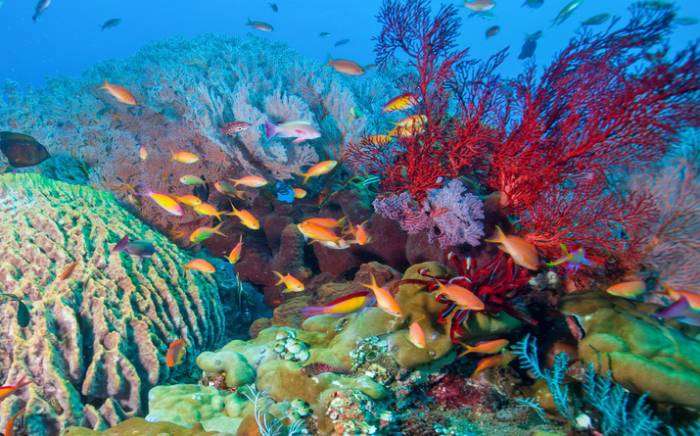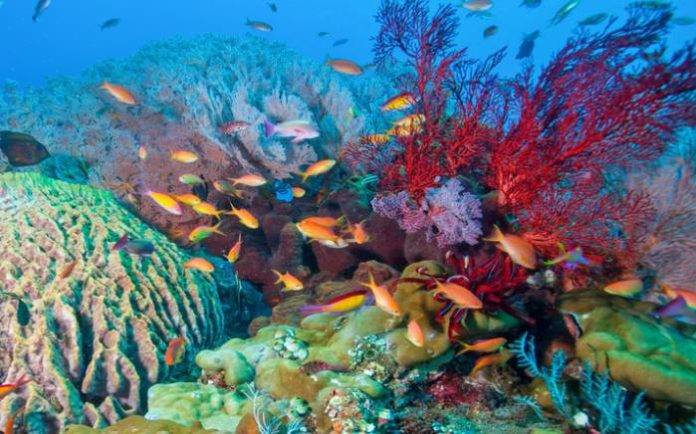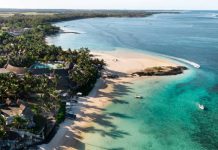Bali, often referred to as the Island of the Gods, is a popular tourist destination known for its rich culture, stunning landscapes, and pristine beaches. One of the major attractions that draw thousands of visitors each year is the exhilarating experience of Bali diving. The island’s diverse marine life and mesmerizing dive sites make it a must-visit location for scuba enthusiasts and underwater photographers alike.

Dive Sites in Bali
Tulamben
Tulamben is a small fishing village on the northeastern coast of Bali, renowned for its world-famous dive site, the USAT Liberty Wreck. This 120-meter-long American ship was torpedoed by a Japanese submarine during World War II and now lies just a few meters off the shore, making it easily accessible for divers. The wreck is covered in beautiful corals and is home to a wide variety of marine life, including schools of jackfish, barracuda, and the occasional blacktip reef shark.
Another popular site in Tulamben is the Coral Garden, a shallow reef teeming with colorful fish and corals. The Drop Off, a wall dive that descends to over 40 meters, offers divers a chance to spot bigger marine life like reef sharks and bumphead parrotfish.
Nusa Penida
Nusa Penida, an island southeast of Bali, is a must-visit destination for Bali diving enthusiasts. Crystal Bay is famous for its pristine coral reefs and the elusive mola mola or ocean sunfish. These unique fish can grow up to 3 meters in length and are most commonly seen between July and October.
Manta Point, as the name suggests, is a cleaning station for manta rays, where these gentle giants come to have their skin and gills cleaned by smaller fish. Gamat Bay is another great dive site, featuring a sloping reef with numerous swim-throughs and a vibrant array of marine life.
Padang Bai
Located on the east coast of Bali, Padang Bai offers a variety of dive sites for different experience levels. Blue Lagoon is a shallow site with calm waters, perfect for beginners or those looking for a relaxing dive. Jepun, another shallow site, is known for its artificial reefs, which attract a diverse range of marine life, including frogfish, leaf scorpionfish, and octopuses. For more experienced divers, Shark Point offers the opportunity to spot white-tip and black-tip reef sharks, as well as the occasional bamboo shark.
Amed
Amed, a charming village on Bali’s eastern coast, is famous for its black sand beaches and vibrant underwater scenes. Jemeluk Bay, a shallow dive site, is perfect for beginners and snorkelers, with its stunning coral gardens and abundant fish life. The Pyramids, an artificial reef made up of concrete pyramids, has become a thriving ecosystem for various fish species, including schooling batfish and trevally. Bunutan, a drift dive along a sloping reef, allows divers to encounter reef sharks, barracudas, and occasionally, the rare pygmy seahorse.
Menjangan Island
Menjangan Island, located in the northwest corner of Bali, is part of the West Bali National Park and offers some of the best wall diving in the region. Anker Wreck, a 19th-century wooden shipwreck, is a fascinating dive site with numerous artifacts and marine life residing around the wreckage. Eel Garden, a sandy slope filled with garden eels, is a unique site where divers can observe these shy creatures swaying in the current. Pos II, a beautiful wall dive, is home to a variety of coral species, large gorgonian fans, and an array of reef fish.
Marine Life in Bali
Bali’s coral reefs are essential ecosystems that provide habitat and food for various marine life. They also contribute to the island’s economy through tourism and support local communities that depend on fishing. Divers can appreciate the beauty and importance of these underwater gardens by exploring the numerous dive sites around the island.
Bali’s waters are home to an impressive variety of fish species, ranging from small, colorful reef fish to larger, more elusive species. Divers can encounter clownfish, parrotfish, angelfish, and many more while exploring the island’s reefs.
The waters surrounding Bali are also home to several large marine animals. Manta rays frequent the island’s cleaning stations, while sea turtles can often be seen grazing on seagrass or resting on coral reefs. Reef sharks, including black-tip and white-tip species, are common sightings at many dive sites.
Bali diving also offers the chance to spot some unique marine critters, such as the mola mola (ocean sunfish), which can be seen seasonally around Nusa Penida. Nudibranchs, colorful sea slugs, are a favorite among underwater photographers due to their intricate patterns and vibrant hues. Pygmy seahorses, tiny, well-camouflaged creatures, can also be found hiding in gorgonian fans at select dive sites.
Diving Seasons and Conditions
The best time for Bali diving is generally between April and November, when the seas are calmer and the weather is generally sunny. However, diving is possible year-round, with each season offering unique marine life sightings and conditions.
Water temperatures in Bali range from 26°C to 30°C (79°F to 86°F) throughout the year. Visibility varies depending on the dive site and season but can reach up to 30 meters (100 feet) in some locations.
Bali’s dive sites offer a range of conditions to suit all experience levels, from beginner to advanced divers. Some sites have strong currents and are better suited for experienced divers, while others have calm waters, perfect for beginners or those looking for a more relaxed dive.
Dive Operators and Courses in Bali
A. Choosing the Right Dive Center
With numerous dive centers available in Bali, it’s essential to choose a reputable and professional operator to ensure a safe and enjoyable diving experience. Look for dive centers with positive reviews, experienced instructors, and well-maintained equipment. It’s also a good idea to consider the location of the dive center in relation to the dive sites you’re interested in visiting.
B. PADI vs. SSI Certifications
Two of the most recognized diving certification agencies are PADI (Professional Association of Diving Instructors) and SSI (Scuba Schools International). Both offer similar courses and are accepted worldwide, so choosing between the two is largely a matter of personal preference and the dive center’s affiliation.
C. Dive Courses Available
Bali’s dive centers offer a wide range of courses for divers of all experience levels. Some of the most popular courses include:
- Open Water Diver: This entry-level course teaches beginners the fundamentals of scuba diving and certifies them to dive up to 18 meters (60 feet) with a buddy.
- Advanced Open Water Diver: This course expands on the skills learned in the Open Water course and introduces divers to new experiences, such as deep diving and underwater navigation.
- Specialty courses: These courses allow divers to focus on specific areas of interest, such as wreck diving, underwater photography, or drift diving.
Tips for Diving in Bali
Before embarking on your Bali diving adventure, ensure that your passport is valid, you have the necessary travel documents and vaccinations, and you’ve purchased travel insurance that covers scuba diving. It’s also a good idea to research local customs and etiquette to respect the local culture.
Dive Equipment Essentials
While many dive centers in Bali offer equipment rental, it’s recommended to bring your own mask, snorkel, and fins for a better fit and comfort. If you have your own dive computer, regulator, or BCD, consider bringing them along as well.
Dive Etiquette and Safety
Follow the guidelines provided by your dive center and instructor to ensure a safe diving experience. Practice good buoyancy control to avoid damaging the coral reefs, maintain a safe distance from marine life, and adhere to the buddy system. Also, be mindful of your air consumption and no-decompression limits.
Bali diving offers unforgettable underwater experiences, with its diverse marine life, stunning coral reefs, and world-class dive sites. By choosing a reputable dive center and practicing responsible diving habits, you can help preserve Bali’s underwater treasures for future generations to enjoy. With its unique blend of culture, natural beauty, and underwater wonders, Bali is truly an underwater paradise waiting to be explored.
Indonesia Liveaboard Experiences
For those looking to explore Indonesia’s vast underwater world beyond Bali, a liveaboard experience offers the perfect opportunity to visit remote and untouched dive sites. Indonesia is an archipelago consisting of over 17,000 islands, each with its unique marine ecosystems and dive locations. Liveaboard trips can range from a few days to several weeks, taking divers on an immersive journey through the crystal-clear waters and vibrant reefs of destinations such as Komodo National Park, Raja Ampat, and the Banda Sea.
Raja Ampat Liveaboard
Raja Ampat, located in the heart of the Coral Triangle, is renowned for its exceptional marine biodiversity and pristine coral reefs. With over 1,500 islands and countless dive sites, a liveaboard experience in Raja Ampat is a dream come true for scuba enthusiasts. Raja Ampat Liveaboard trips in typically last between 7 to 12 days, allowing divers to fully immerse themselves in the region’s underwater wonderland. Dive sites in Raja Ampat offer encounters with manta rays, wobbegong sharks, schooling fish, and a myriad of macro life.
By incorporating liveaboard experiences into your Indonesian diving adventure, you can explore the country’s vast underwater world and create unforgettable memories. Whether you choose to dive Bali’s vibrant reefs, embark on a liveaboard journey through Indonesia’s remote islands, or explore the world-renowned marine biodiversity of Raja Ampat, the treasures of the underwater world await.











































